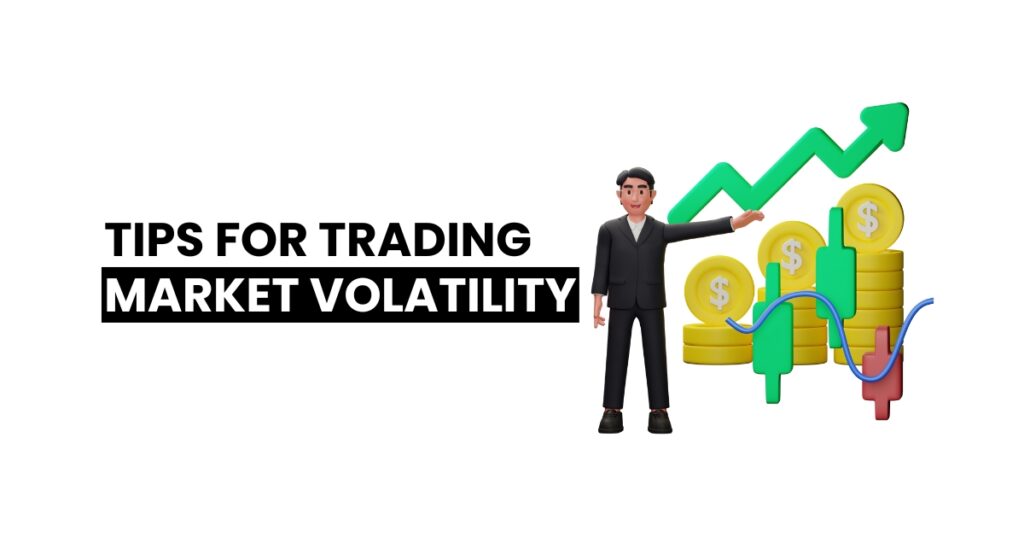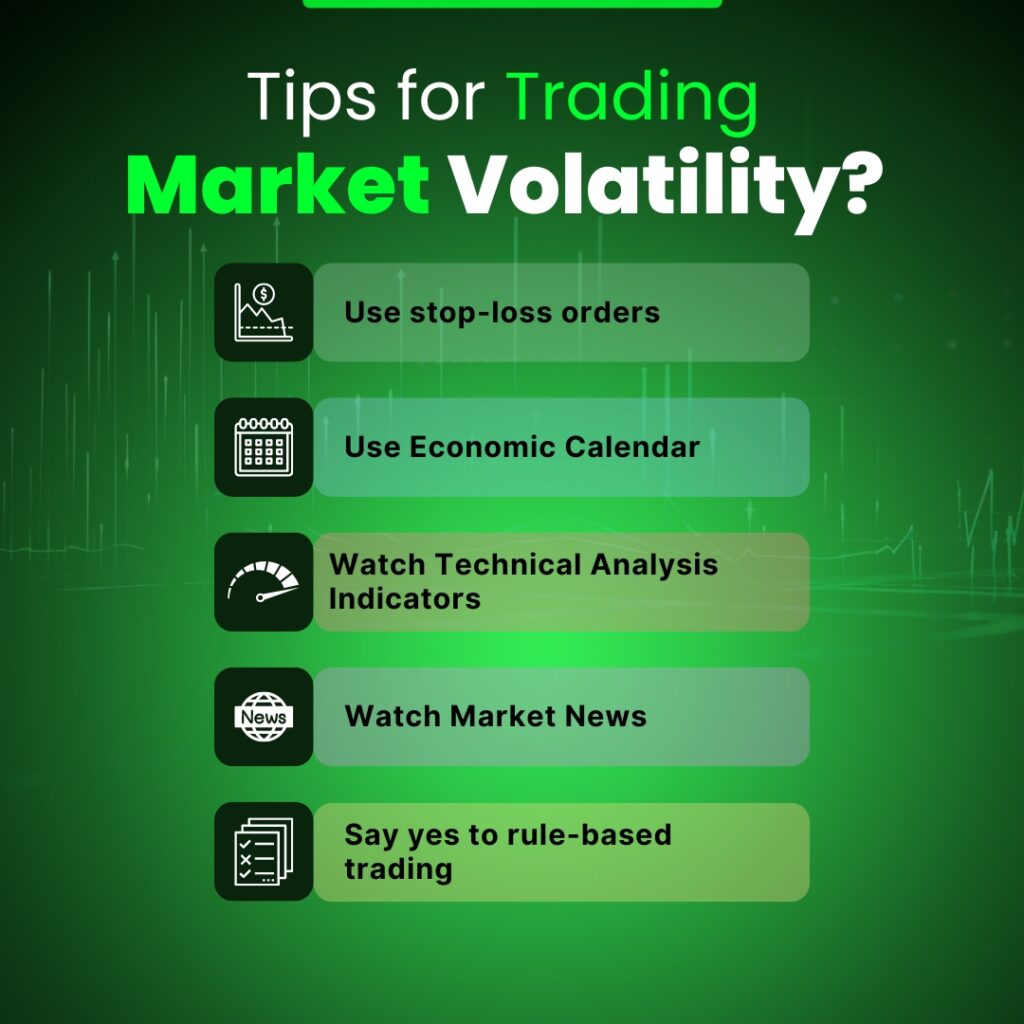What is Market Volatility in Forex
The foreign exchange market is amongst the most volatile and highly liquid financial markets. Daily, many new traders enter the market to take advantage of the volatility and liquidity of the forex market.
Volatility is one of the most basic yet important concepts in currency trading. However, even after that, many traders are unable to understand it well.
Volatility has the power to give you profit or to enlarge your loss, depending upon your approach. In this blog, we will discuss the concept of volatility in forex and how to track and trade it.

What is Market Volatility?
Market Volatility is the measure of change in the price of an asset over a period. In other words, it can be defined as the degree of difference between the opening and closing price of the asset over a period.
Forex volatility is the degree of change in a currency pair’s price or exchange rate. The forex market offers great volatility due to various fundamental, economic, geopolitical, and other factors.
The concept of volatility is not limited to the forex market. It is applicable to crypto currency, commodities, stocks, indices, and other financial markets.
A quick glance
Forex volatility is the degree of change in a currency pair’s price or exchange rate. It can be defined as the measure of the difference between the opening and closing price of the asset over a period.
A currency pair with a price fluctuation of 5 to 15 pips is considered as low volatile, while a currency pair within 50 to 200 pips is considered a highly volatile pair.
- Bollinger Bands
- Average True Range (ATR)
- Relative Strength Index
- Forex Volatility Calculators
- Use stop-loss orders
- Use Economic Calendar
- Watch Technical Analysis Indicators
- Watch Market News
- Say yes to rule-based trading
Importance of Forex Market Volatility
Volatility is the most essential component of the trading market. No volatility means no price fluctuations, and as a result, no trading will take place. High volatility means high profit, high risk, and more opportunities. Meanwhile, low volatility means low profit with low risk and fewer opportunities.
Simply your trade decision, and risk management is greatly affected by the forex volatility. In the forex market, there are different currency pairs with different volatility rate.
A currency pair with a price fluctuation of 5 to 15 pips is considered as low volatile, while a currency pair within 50 to 200 pips is considered a highly volatile pair. Here is a table of most volatile and least volatile currency pairs to help you:
How to track forex pair volatility
Currency pairs’ volatility changes constantly, so traders must monitor volatility before making a trade decision. Calculating volatility may be difficult for a beginner, and wrong calculations can affect overall results.
So, you can seek the help of a number of technical analysis tools and indicators to track the volatility of a currency pair. Here are the top ways to calculate the volatility in forex:
Bollinger Bands:
Bollinger Bands are among the most popular technical analysis indicators. They are used to determine overbought and oversold conditions, support and resistance, and other pivot trade points.
In addition, Bollinger bands are a popular means of tracking forex volatility. The indicator consists of three bands: upper, middle, and lower. The greater the distance between the upper and lower bands, the greater the volatility, while narrow bands indicate less volatility.
Average True Range (ATR):
ATR is another popular tool for calculating forex pair volatility. It is denoted by a line in a chart.You just need to go to the settings of your charting tool and select the ATR.
A single line in a box will appear in your chart. When the ATR line goes down, it suggests low volatility, and when it goes up, it suggests high volatility.
Relative Strength Index:
RSI is a popular technical analysis oscillator, under which price oscillates within the range of 0 to 100. A price above 70 indicates an overbought condition, while a price below 30 indicates an oversold condition.
RSI can also provide key insights into forex market volatility. Volatility is generally high during overbought and oversold conditions and during large swings in the RSI band.
Forex Volatility Calculators:
If you are new to the forex world and are not well-versed in technical analysis indicators, you can use a forex volatility calculator.
Many trading platforms and websites provide free access to forex volatility calculators. These tools are quite easy to use and determine the current market volatility. You just need to search for the currency volatility calculator on Google, and you will get a number of options on the site.

Tips to trade forex market volatility
Volatility is a highly sensitive component of forex trading. It can turn your profit into a loss or your loss into a profit. Therefore, it is a must to keep track of market volatility. Here are some amazing tips to trade volatility like a pro and avoid unexpected trade outcomes:
Use stop-loss orders:
A stop-loss order is a protection measure to safeguard your trade against excessive losses. When you are dealing with highly volatile assets, a stop-loss forex order is a must.
You just need to set a level at which your trade will close at a loss. So, even in the most favourable circumstances, you will not lose more than you can afford to.
Use Economic Calendar:
An economic calendar is a tool for keeping an early track of economic events, which are listed with a date, time, country, and impact.
These events significantly impact the volatility of the asset price. Therefore, keeping track of these events will help you determine forex pair volatility.
Watch Technical Analysis Tools:
The best way to keep a currency pair’s volatility in check is to monitor its asset price. Technical analysis tools, such as chart patterns and indicators, can provide valuable insights regarding asset price volatility.
Watch Market News:
A currency represents a country, so every news or event impacting the country impacts currency price volatility. For example, the current Israel—Iran conflict is significantly affecting the price volatility of the XAU/USD pair.
So, a trader should monitor news and current events that can impact forex market volatility. These events have the power to change the entire market scenario.
Say yes to rule-based trading:
Predicting volatility in forex is among the most difficult tasks. Even after watching all the news, events, and indicators, one cannot track it with 100% accuracy.
Therefore, the best thing you can do is follow the trade rules. Trade with a proper risk-reward ratio, follow your trading strategy and control your emotions. This will help you deal with unexpected volatility in the market.
Conclusion
Volatility is the most crucial element that gives birth to trading opportunities in the market. Volatility has both positive and negative aspects. Many traders fear forex market volatility as it increases the risk.
However, volatility is essential for the functioning of the financial market. And you can make a good amount of money in the market trading volatility. You just need to check on factors that affect volatility and take necessary precautions to deal with it.

